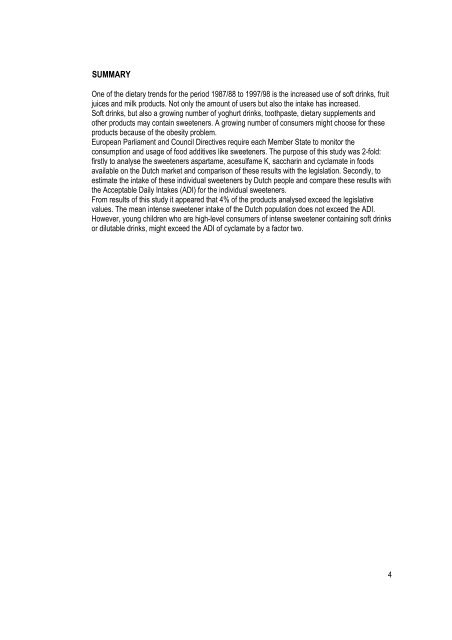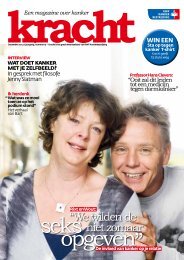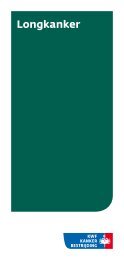Onderzoek naar de kunstmatige zoetstoffen Sacharine ... - Repository
Onderzoek naar de kunstmatige zoetstoffen Sacharine ... - Repository
Onderzoek naar de kunstmatige zoetstoffen Sacharine ... - Repository
Create successful ePaper yourself
Turn your PDF publications into a flip-book with our unique Google optimized e-Paper software.
SUMMARY<br />
One of the dietary trends for the period 1987/88 to 1997/98 is the increased use of soft drinks, fruit<br />
juices and milk products. Not only the amount of users but also the intake has increased.<br />
Soft drinks, but also a growing number of yoghurt drinks, toothpaste, dietary supplements and<br />
other products may contain sweeteners. A growing number of consumers might choose for these<br />
products because of the obesity problem.<br />
European Parliament and Council Directives require each Member State to monitor the<br />
consumption and usage of food additives like sweeteners. The purpose of this study was 2-fold:<br />
firstly to analyse the sweeteners aspartame, acesulfame K, saccharin and cyclamate in foods<br />
available on the Dutch market and comparison of these results with the legislation. Secondly, to<br />
estimate the intake of these individual sweeteners by Dutch people and compare these results with<br />
the Acceptable Daily Intakes (ADI) for the individual sweeteners.<br />
From results of this study it appeared that 4% of the products analysed exceed the legislative<br />
values. The mean intense sweetener intake of the Dutch population does not exceed the ADI.<br />
However, young children who are high-level consumers of intense sweetener containing soft drinks<br />
or dilutable drinks, might exceed the ADI of cyclamate by a factor two.<br />
4






